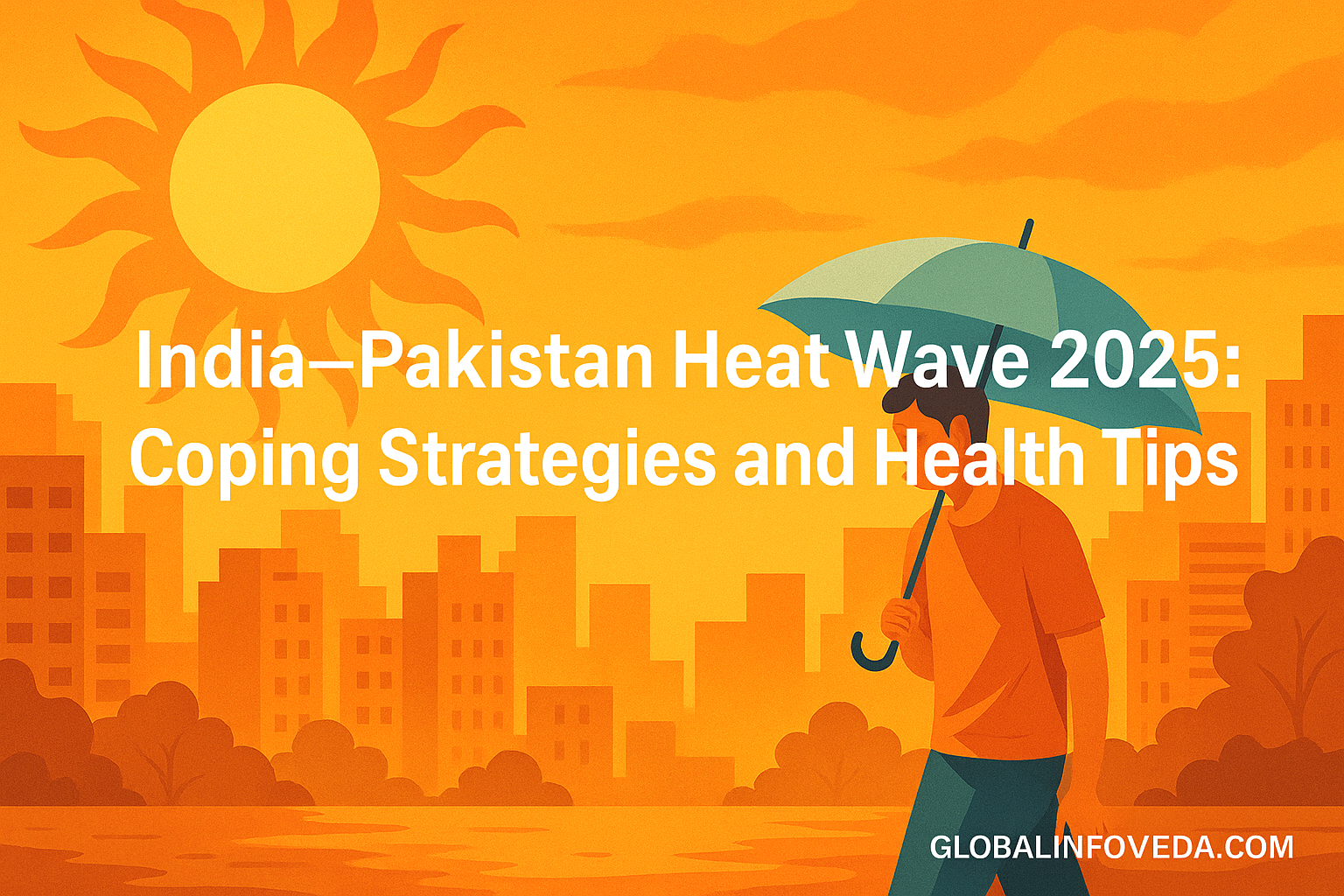Heat Wave 2025
The year 2025 has brought with it one of the most intense and prolonged heat waves across the Indian subcontinent, particularly affecting northern and central India and eastern Pakistan. With temperatures soaring past 48°C (118°F) in many regions and little relief from monsoon delays, heat-related illnesses and infrastructural stress are reaching alarming levels. The crisis is not just climatic—it’s social, economic, and deeply personal.
This extreme weather event has reignited conversations around climate resilience, public health preparedness, sustainable urban design, and individual safety. Here’s a comprehensive and highly actionable guide to understanding the heat wave, recognizing emerging health threats, and implementing both personal and community-level strategies to survive and support others during this escalating climate emergency.
🔥 Understanding the 2025 Heat Wave
- Regions Affected: Major cities and rural belts in Delhi, Rajasthan, Haryana, Punjab, Uttar Pradesh, Bihar, West Bengal, and Pakistan’s Sindh and Balochistan provinces.
- Duration: Over 40 consecutive days of extreme heat without significant rainfall or cloud cover.
- Meteorological Causes:
- Prolonged high-pressure systems
- Delayed and weakened monsoon winds
- Urban Heat Island (UHI) effects in metro areas
- Low forest and vegetation cover in industrial zones
- Infrastructure Impact:
- Grid overload from AC and fan usage leading to prolonged blackouts
- Depleted groundwater levels and declining river flows
- Train delays due to track warping and power failures
- Increased hospital admissions due to respiratory and cardiovascular issues
- Crop failures in heat-stricken rural areas reducing local food supply
- Urban water supply rationing and tanker demand spikes
☀️ Health Risks from Extreme Heat
Primary Medical Emergencies:
- Heat Exhaustion:
- Symptoms: Nausea, cramps, dizziness, excessive sweating
- Risk Groups: Elderly, outdoor workers, children
- Heatstroke:
- Symptoms: Dry skin, rapid pulse, mental confusion, fainting
- Medical Attention: Immediate emergency response needed
- Dehydration:
- Even mild dehydration reduces focus and physical function
- Commonly overlooked in the elderly and infants
Secondary Health Effects:
- Respiratory Issues: Aggravated asthma and COPD due to dry air and pollution
- Mental Fatigue: Lethargy, insomnia, irritability, and lowered productivity
- Skin Issues: Increased risk of fungal infections, rashes, and sunburn
- Digestive Issues: Spoiled food and poor hydration affect gut health
- Eye Irritations: Caused by prolonged UV exposure and dust
🛡️ Coping Strategies for Individuals & Families
1. Hydration is Life-Saving
- Minimum 3–4 liters of water daily per adult
- Use electrolyte supplements, homemade ORS, or glucose powder during outdoor exposure
- Drink coconut water, lime juice with salt, or buttermilk to restore minerals
- Avoid carbonated sodas, energy drinks, and sweetened packaged juices
2. Cooling Interior Environments
- Reflective window films, aluminum foil, or thick blackout curtains
- Cross-ventilation at night and early morning
- Switch off unused appliances to reduce indoor heat
- Create shaded terraces using jute mats or garden netting
3. Heat-Appropriate Diet Tips
- Include raw salads, seasonal fruits, and fiber-rich vegetables
- Hydrating Indian recipes: bel sharbat, barley water, rooh afza milk
- Use cumin, fennel, mint, and coriander in meals to aid cooling
4. Personal Cooling Essentials
- Soak towels in cold water and place on neck, wrists, and ankles
- Wear open footwear to allow body heat to escape
- Carry mini cooling gel packs or water-filled spray bottles
5. Routine Adjustments
- Use light bedding; sleep on cotton or khus mats
- Stay in shaded or underground locations during peak hours
- Encourage mid-day power naps to recover from heat fatigue
👨👩👧👦 Special Considerations for Vulnerable Groups
- Children & Infants: Hydrate with oral drops, dress in muslin, and avoid carriers in direct sun
- Senior Citizens: Provide cooling pillows, easy-to-digest meals, and supervised hydration
- Pregnant Women: Monitor hydration, avoid long commutes, and rest post meals
- People with Disabilities: Assign caregivers to monitor temperature and hydration
- Pets & Livestock: Provide shaded water troughs and rest time; avoid iron bowls which heat up quickly
🏥 When to Seek Immediate Medical Help
- Body temperature above 104°F for over 10 minutes
- Confusion, slurred speech, or seizures
- Lack of sweating despite extreme heat exposure
- Skin hot to touch, and erratic breathing or unconsciousness
- Signs of electrolyte imbalance (muscle cramps, vomiting, disorientation)
First Aid Protocol:
- Move to a shaded or air-conditioned area
- Remove excessive clothing
- Apply cold compresses to neck, armpits, and groin
- Hydrate only if the person is fully conscious
- Transport to nearest emergency care if symptoms persist
🏘️ Community & Government Initiatives
- Emergency Cooling Shelters: Open 24/7 at community centers, government buildings, and places of worship
- Mobile Clinics & Heat Ambulances: Equipped with IV fluids, fans, and emergency responders
- Water & ORS Banks: Community fridges, water ATMs, and distributed rehydration kits
- Public Messaging: Heat index bulletins, school alerts, and multilingual safety posters
- Rural Outreach: NGOs conducting door-to-door awareness campaigns
- Workplace Mandates: Shaded rest zones, heat-appropriate dress codes, and compulsory breaks
🌍 Climate Adaptation & Urban Resilience
- Heat Action Plans: Mandatory for cities with temperature zones above 40°C
- Green Building Codes: Passive ventilation, rooftop gardens, solar reflective paint
- Water-Smart Cities: Urban ponds, wastewater recycling, public water dashboards
- Education & Simulation: Monthly drills in schools; climate emergency kits in homes
📢 Final Thoughts
The India‑Pakistan Heat Wave of 2025 is not just a seasonal challenge—it’s a wake-up call to urgently redesign our built environment, rethink our public health protocols, and empower communities with life-saving information. As climate patterns become more extreme, individual readiness and collective resilience must evolve.
Let’s act collectively, adapt wisely, and help protect the most vulnerable.
🌐 For more survival guides, health hacks, and climate updates, visit GlobalInfoVeda.com
